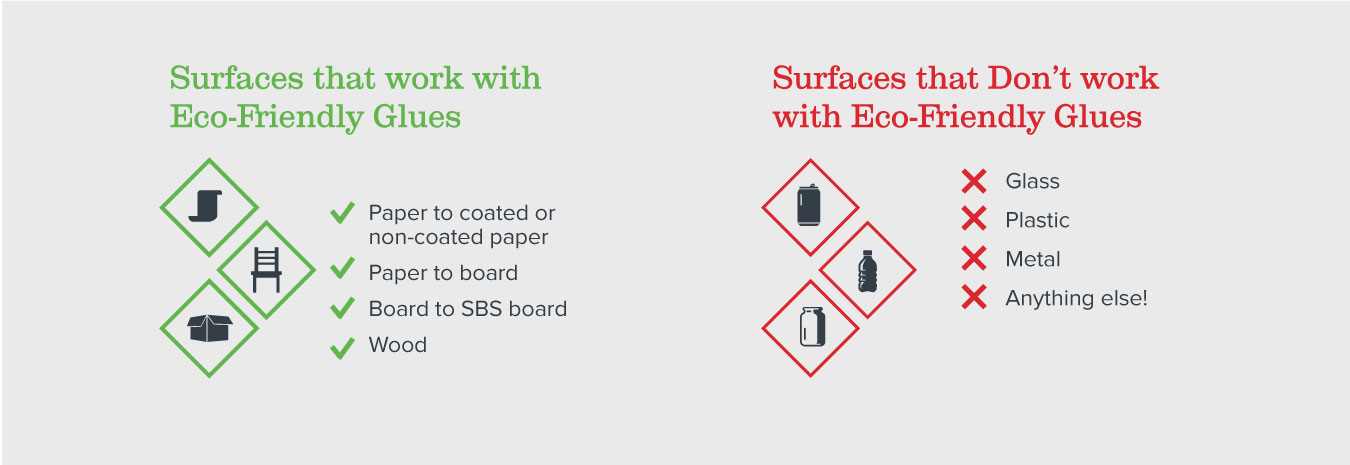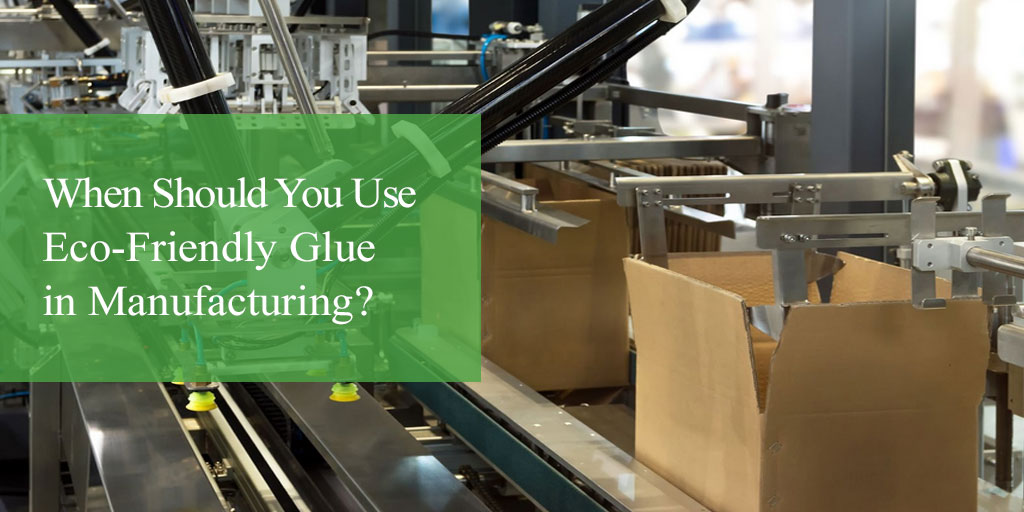Recently, many companies are becoming more eco-conscious and looking to improve their manufacturing processes. There are many approaches to take, and a frequent one is to look for eco-friendly alternatives for adhesives.
Glue plays a significant role in manufacturing, as it is the substance that binds surfaces together. While not often seen in the final product, applying eco-friendly glue can improve your manufacturing process's impact on the environment.
Eco-friendly glue can be an excellent alternative for you, depending on your application. Let’s discover the types of eco-friendly glue and the manufacturing processes they complement.
Types of Eco-Friendly Glue
Liquid Glue
Starch and dextrin glues are both water-based and made from modified vegetable starches. These glues are popular with paper and packaging manufacturers because they are inexpensive, abundant, and renewable.
Gelatin-based glues are derived from collagen, sugar, Epson slate, water, and glycerine, all products that can be found right in your kitchen. At LD Davis, we recycle leftover gelatin netting from pharmaceutical companies and turn it into a recycled, non-toxic adhesive.
Working with Eco-Friendly Adhesives
Eco-friendly glues work best with porous surfaces. The adhesives have to be able to permeate the surface of both objects to adhere them together. While gelatin glue can be used to etch glass, it cannot securely bond two pieces of glass together.

Applications for Gelatin and Liquid-Based Glues
Liquid-based and gelatin glues are versatile and suitable for a range of applications. These adhesives are often applied in the packaging and bookbinding industries but can create various products depending on your manufacturing method.
Liquid-Based Glue Applications
Liquid-based glues are used in the packaging industry for labeling, carton sealing, laminating, and rigid box manufacturing. This type of glue is popular in food and beverage and has recently been used in paper straw manufacturing.
Gelatin-Based Glue Applications
This type of glue is popular in the packaging and bookbinding industry. Gelatin glue is suitable for rigid boxes, laminating, paper crimping, and abrasives. When applied to paper and cardboard, the gelatin glue will break down over time, creating packaging that is more biodegradable.
In the right conditions, gelatin glues can provide a long-term hold, making it great for woodworking. Unlike synthetic and plastic glues, the glue can hold for centuries and be reset without damaging the original product. Gelatin glue can also be used as a dust suppressant or hold soil and seeds together for transit and planting as an alternative to plastic pots and bedding.
Choosing the Right Glue for Your Process
Eco-friendly glues provide an excellent solution for some manufacturers but may not suit every application. Below is an infographic that highlights the use and benefits of gelatin and liquid-based glue to reference.
The Advantages of Eco-Friendly Adhesives
Gelatin and liquid-based glues are often a cost-effective way to improve your company's sustainability practices and innovative thinking. These glues help reduce waste while reducing both production and shipping costs. Show your customers that you are taking an active step in creating a more sustainable product.
If you are interested in learning more about the benefits of using eco-friendly glue or if it's suitable for your application, contact us.








